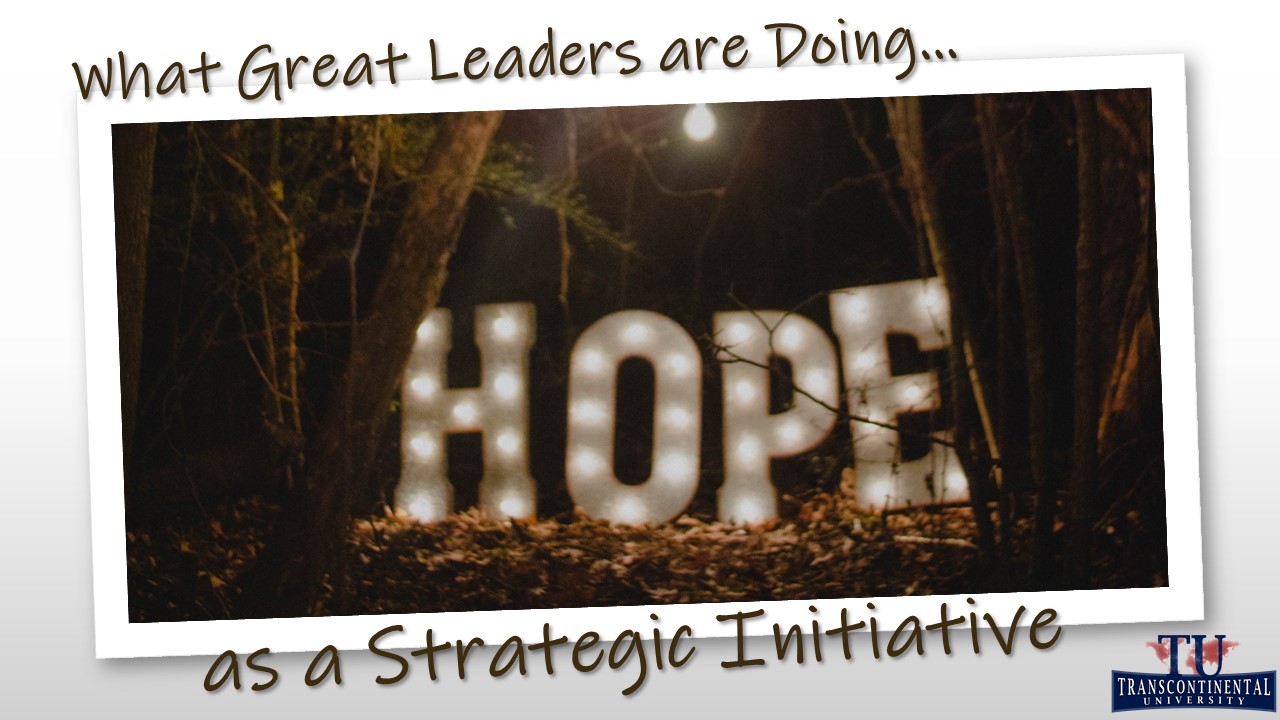Endless Organizational Problems
A Fundamental Leadership Flaw – Too Many Problem Solvers
By Dr. Ted Sun & Cody McMichael

Most Executives are finding it challenging to take control of their schedules. When asked about this organizational reality, they speak of the endless problems that arise. A recent Deloitte research study found that nearly 70% of executives are overwhelmed and are looking for another job. But is there a way out of this reality?
Unfortunately, the answer is NO. The fundamental leadership issue behind a lack of control and stress is having too many problem-solvers. What happens when you have an abundance of problem-solvers? They need a problem to solve, so they wait for a problem. When problems happen, their skills are validated and they feel needed. However, by the time a situation becomes a problem, it is very costly to the organization from a resource, finance, and timeline perspective. To understand how to get out of the rat race of constant fire-fighting with endless stressful problems, you have to look at the conventional wisdom in almost every job description of managerial roles and the systemic nature of problem-solving.
The Problem Addiction: How did we get here?
Take a look at your job description; one of the key skills required for most supervisory or management jobs includes being a problem solver. You will find the skill stated in learning outcomes for formal education and corporate training – develop problem-solving skills. At a young age, kids are taught how to solve problems in school. When you get to the university level, problem-solving becomes more and more complex, as more challenging problems are thrown at you. For example, many business schools use case studies to develop limited problem-solving skills. In all of these instances of developing problem-solving skills, problems are given to the learner, whether on a piece of paper or in some simulation. The basic assumption is that the problem is already happening. In the real world, how many problems are given to you on a piece of paper? The lack of problem identification and clarification creates a reactive mentality where problems must happen first so one can only react to them. Leaving little to no room for strategic thought, only reactionary choices.
 With the countless leaders who possess problem-solving skills, they are taught to wait for a problem to be given to them. Only then can they validate their ability to solve the problem. Too often, the challenge of a timely response to a problem does not enable a deeper exploration of the many influences as to why it happens (systemic analysis). As a result, band-aids are used to address only the surface issues. For example, we’ve seen numerous companies deal with the problem of talent retention. As they see their talent quit, it is already too late. They struggle to make quick and uninformed decisions, trying to keep their talent at the last minute, such as using a surface band-aid of throwing money at people. In most cases, these actions fail to keep the talent. While blame becomes easy, the responsibility to avoid this constant loss of talent requires a preventative approach and systemic thought. Only systemic changes can address the root problem and prevent it from happening.
With the countless leaders who possess problem-solving skills, they are taught to wait for a problem to be given to them. Only then can they validate their ability to solve the problem. Too often, the challenge of a timely response to a problem does not enable a deeper exploration of the many influences as to why it happens (systemic analysis). As a result, band-aids are used to address only the surface issues. For example, we’ve seen numerous companies deal with the problem of talent retention. As they see their talent quit, it is already too late. They struggle to make quick and uninformed decisions, trying to keep their talent at the last minute, such as using a surface band-aid of throwing money at people. In most cases, these actions fail to keep the talent. While blame becomes easy, the responsibility to avoid this constant loss of talent requires a preventative approach and systemic thought. Only systemic changes can address the root problem and prevent it from happening.
Outcomes of Problem-Solving
The outcomes of having many problem-solvers result in many people waiting for problems to solve. At the individual level, constantly fire-fighting problems creates overwhelming stress at all levels of the organization. Research has shown that the average executive is forced to reschedule approximately 73% of their meetings in any given week. Furthermore, being forced to react forces leaders away from using their higher-order thought processes and toward basic survival instincts. While strategic thought is needed, leadership mentality is stuck in a survival box making misinformed decisions. We’ve all played the telephone game where one starts with a single sentence and sees how that sentence gets changed by the time it moves down a few people. Complex problems at the organizational level are exponentially worse by the time leaders are informed of the problem.
At the group level, constant problem-solving significantly impacts the morale of the team. While a few may get the thrill of being needed in the short run, constantly having to change what you’ve planned to do gets old very quickly. When dealing with one problem after another, the team’s workload continues to mount as time is stolen for problem-solving.
At the organizational level, one of the primary reasons why most projects fail to meet schedules and budgets is that too many people are waiting for a problem to land on their desks. We have seen some very well-thought-out plans for launching new products and services fail to be executed. With many problem-solvers not knowing how to prevent a problem from happening, every plan finds itself with numerous problems once implementation begins. While the financial costs are often measurable, the intangible costs to the organization can be crippling. We recently witnessed an organization outline a 6-month plan for launching a new product that took well over a year. By the time it was completed, employee morale was at an all-time low; quiet quitting was abundant; and, even at the leadership levels, many sought new jobs before we were engaged.
A Systemic Solution: Developing Problem Preventers

To address the problem of too many problem-solvers, successful organizations make a conscious effort to develop problem-preventers
. Leaders who can effectively and efficiently identify problems before they become costly. This requires key skills, like systems thinking, that go well beyond the surface, and designs systems that drive desired outcomes. While problem solvers are always needed, balancing them with problem-preventers enables leaders to get out of the rat race of constant firefighting problems. This is not a short course in the traditional realm of leadership development certificates. Developing problem-preventers is a long-term and integrated development program that we have fine-tuned after decades of global research and experience. This is well worth the effort when leaders find more control in their schedule and work can be more enjoyable with time for strategic thought. In a recent engagement, one executive shared his reflection: “I never thought I’d see more and more people coming into my office sharing the solutions to possible problems which they’ve already begun to implement to avoid a major issue in the future.”
Every organization needs more problem-preventers. Start the development today by asking every leader and executive how they can prevent current problems or similar ones in the future. Guide your leaders toward going beyond what’s in front of them.
Let’s chat about your organization and see how we can make a significant impact on your culture, level of control, innovations, and success. Email Cody – Cmcmichael@tc-university.org
















